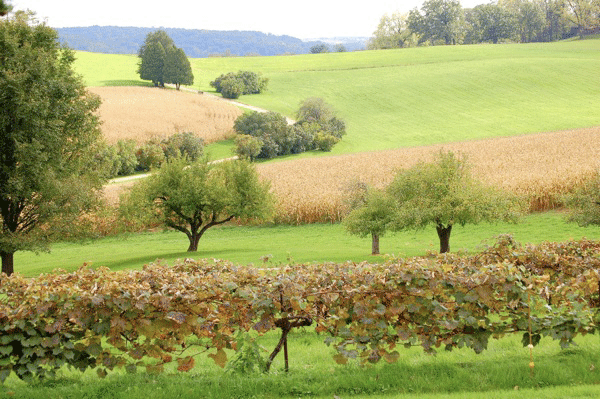 |
|

| Theatrical Oasis |
| Art-chitecture |
| Enchanted Estate |
| Madison Arts Incubator |
| Hand-crafted Healing |
| Designing the Big Day |
| Green Piece |
| Tattoo Taboo? |
| Worth the Wait |
| We Want the Funk |
Art-chitecture: Taliesin through the eyes of Frank Lloyd Wright |
||||||||||||
| Maya Carroll | ||||||||||||
Artist or Architect? In fact, that is why famous architect Frank Lloyd Wright and his family chose to call Spring Green their hometown. Born into the comfort and luxury of a Welsh heritage, Wright’s mother settled in Wisconsin because it reminded her of her parents’ home in Northern Wales. Consequently, Wright grew up basking in this pastoral countryside, developing a love for the land and forming ideas of what is beautiful, natural and pleasing to the senses, which he would later incorporate into his designs of houses, gardens, picturesque views and surrounding landscapes.
Perched on the brow of the hill, Taliesin served as the summer home of Wright and his family for 48 years and is still lived in today by private owners. Taliesin, which means “shining brow” in Welsh, is a sight for the eyes and a feast for the senses. With its many wings and terraces reaching out along the crest of the hill, the building embraces the site rather than overpowering it. Pulitzer Prize-winning architecture critic, Robert Campbell, called Taliesin the “greatest single building in America." The landscape surrounding Taliesin is breathtakingly beautiful, and the artist in Wright appreciated every aspect of its splendor. From his careful layout of interior spaces and placement of windows, the architect guided the eye to views he considered most spectacular. The master bedroom overlooks a deep ravine created by glaciers thousands of years ago, now majestically overgrown with balsam and birch trees hugging a glassy, silver lake. As natural as the surroundings seem, each sight within the grounds of the 600-acre estate has been carefully planned and orchestrated by a single man. With a keen eye for detail, the artist and architect were one within Wright. Organic Architecture “I knew well by now no house should ever be on any hill or on anything. It should be of the hill, belonging to it,” Wright wrote in his autobiography. “Hill and house should live together each the happier for the other.” Throughout his work, Wright emphasized bringing the elements of nature within the home and living as one with his surroundings. He called these designs Prairie Houses, with low, horizontal lines and wide overhanging eaves that reflected the layout of the hills in which they were situated. Wright used materials unique to the area around
Spring Green to build Taliesin. Every piece of wood that went into its construction was cut at the local lumberyard, the limestone was quarried from a mile away and even the plaster in the walls was mixed using sand from the rivers in southern Wisconsin. Wright liked to blend textures not because it was necessary but because it evoked the feeling of being within nature while inside his dwellings. “Architecture, after all, I have learned – or before all, I should say – is no less weaving and a fabric than the trees,” Wright wrote. As an artist better known for his work at the drafting table than his expertise with a brush and palette, Wright constructed his home to be supremely natural. The entrance into Taliesin is designed with low ceilings, forcing one to duck down and move forward into the main opening of the room toward the expansive vistas and brilliant view that lie beyond its glass walls. The large and seamless windows span from ground level to the top of an 18-foot ceiling. Such framework is typical of the homes Wright built during this period of his life, after he returned from an extended stay in Japan to design the Imperial Hotel in Tokyo. Wright’s emphasis on aesthetic beauty didn’t fall short of touching upon a single corner of the house, aligning each window and frame to reflect nature. “The lines of the hills are the lines of the roofs; the slopes of the hills, their slopes,” he wrote. Even the light wood walls were built in the shade of broad eaves, creating shadows and depth to reflect the flat, sandy stretches of the river below. Wright also tended to the garden, overseeing the planting of each flower and tree to make sure it matched precisely with his expectations. The external settings were a permanent display of art for the architect. The trees and the terrace formed the backdrop to his studio while the expansive valley became a portrait commanding his room. Instead of using a brush and oil acrylic paints, Wright used construction and plywood to create his masterpieces.
|
||||||||||||
About Us | Contact Us | Business Partners | Archives | Sitemap
Copyright 2007 Curb Magazine


